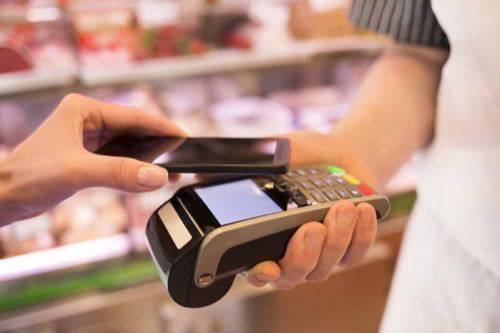
ReadWritePredict is a look ahead at the technology trends and companies that will shape the coming year.
Guest author Bill Ready is CEO of the PayPal unit Braintree.
Mobile is on the rise and has helped disrupt many traditional industries, including transportation, accommodations, services and retail. As a result, mobile commerce is on a tear, and is expected to account for global revenues of $204 billion by year end.
As consumers shift to mobile, they’re demanding simple and straightforward buying experiences like those of Airbnb, Trunk Club, Uber and YPlan. The simpler mobile buying becomes, the more mobile commerce will grow. Yet there’s still a steep gap between browsing and buying on mobile. Too many obstacles still stand between consumers and merchants trying to connect via mobile devices.
How will we get from where we are today, when mobile only accounts for an estimated one percent of all commerce transactions, to 30%, 40%, 50% or more? And how will mobile commerce evolve over the next few years? Here are my predictions.
Digital Wallets Will Become A Preferred Option For Mobile Purchases
Over the next five years, we’ll see digital wallets—apps and hardware that will let us buy things directly, without the need to fumble for a credit card—becoming the primary way people buy on mobile. That shift is going to begin in earnest in 2015. But it won’t be because people want to scrap the physical wallet they carry in their purse or pocket.
We carry our smartphones around with us everywhere we go, using them to communicate, consume content, shop and fill spare moments in our day. On average, U.S. smartphone owners now spend about three hours per day on their phones. The increase in the amount of time spent on mobile is also translating to an increase in mobile commerce.
This holiday season, we’ve already seen tremendous growth in this area—whether it was buying a new flat screen TV on Thanksgiving while sitting at the dinner table, downloading a popular gaming app to fill the time once family had left, or even renting a hotel room for next week’s holiday party directly from your phone. My own company Braintree—which is part of the PayPal family—saw mobile transaction growth on Thanksgiving, Black Friday and Cyber Monday this year rise by respective factors of 4.2, 2.3 and 2.9 compared to the same period in 2013.
Yet the gap between browsing and buying on mobile persists. Lots of online shopping still isn’t optimized for mobile, and requires consumers to fill out credit card, shipping and billing information before they can check out. Consumers are less willing to input data on their phones and expect “one touch” buying of the sort that only digital wallets can provide.
While the idea of the digital wallet isn’t new, it’s been slow to gain traction. But things like Apple Pay and PayPal’s One Touch are changing that.
Security Concerns Will Further Drive Consumer Adoption of Digital Wallets
For the last 15 years, digital wallets, particularly those at scale such as PayPal, have allowed people to transact online or on mobile without revealing their financial information, giving them increased security. However, the majority of consumers today still forego that security, passing their financial information to countless merchants through card swipes and online entry forms.
After several major in-store breaches across many well known, reputable retailers, consumers and merchants alike are now seeing that additional security is absolutely required. The legacy payment model of sharing detailed financial information with every card swipe and online transaction clearly no longer works.
For this reason, digital wallets will become a must-have for consumers and merchants that are looking to transact safely and securely.
The Shift Toward Wearables and Beacons Will Help Fuel Context-Driven Commerce
In the coming years, both wearables and the proliferation of beacons will change the way we browse and buy. With the help of companies like Apple, Pebble and Samsung, more and more time will be spent on handheld (or even smaller) devices. And nearly every mobile device and wearable also serves as a Bluetooth equipped beacon.
As a result, our devices are going to have much greater ability to interact with the world around us. But they’ll also need to know an increasing amount about us to do it well. Everything from our location to past purchase history will be used to predict our wants and needs so that we can quickly and easily interact with computing devices that aren’t designed for data entry.
As we begin to browse and buy more via our wearable devices, context-aware technology that enhances the way we interact with the world around us will become all the more critical. Beaconing technology—such as that from Estimote and Euclid—are providing effective ways for merchants to personalize the in-store shopping experience and to let consumers easily purchase things from their phones.
Bluetooth low-energy technology is also enabling solutions like Venmo Nearby, which connects people within a given location so they can easily exchange money for anything from dinner to a concert without even needing a phone number or email address. As wearable devices with even smaller screens devices start to catch on, context-driven experiences and digital wallets will become all the more critical.
People Will Buy Fewer ‘Things,’ More Experiences
With the growth of the sharing economy and collaborative consumption, consumers are spending more on experiences. Booking weekend getaways using Airbnb or HotelTonight; purchasing tickets to shows and events via sites like StubHub or SeatGeek; and sending friends “gifts” via social peer-to-peer (P2P) apps for a beer or a movie ticket are becoming more common.
Analyzing spending keywords on Venmo—which is processing more than $2.8 billion of annualized mobile volume and seeing 50 percent quarter-over-quarter growth—we’re seeing an increase in payments for experiences like a trip to Tahoe, fantasy football or going to the movies. Next year, we’ll continue to see people shifting from buying “things” to buying experiences.
Social Commerce Will Make a Comeback
Just a few years ago, many declared that social commerce had failed. The conventional wisdom was that social commerce was limited to buying through a brand’s social media page, or sharing purchased items via social media.
But social commerce is actually thriving in more obvious places—where both buying and conversation around buying happens naturally. We’ll soon see consumers start sharing and buying on social sites like Twitter, Facebook and Houzz.
In addition, we’ll also see a rise in social P2P payments. This growth will not only be a result of an increase in activity from early adopting millennials, who currently dominate the space, but will also result from use by a growing demographic as social commerce becomes mainstream and millennials expand beyond their peers to their entire network.
Lead photo courtesy of Shutterstock










